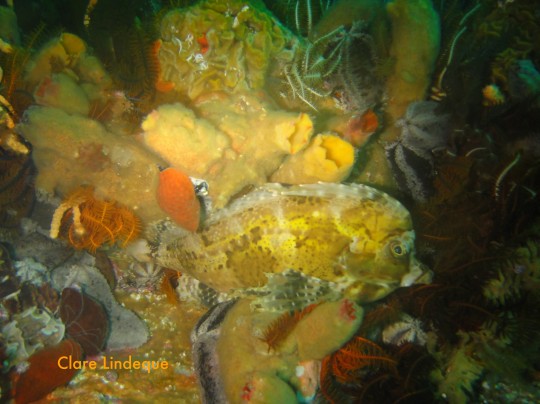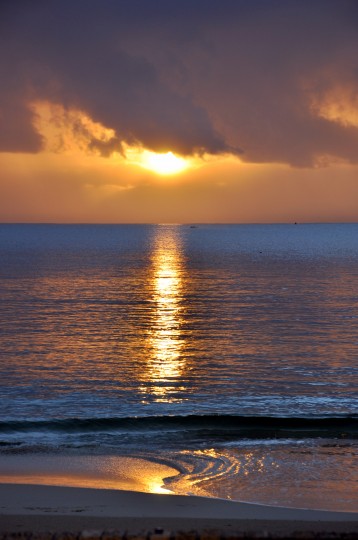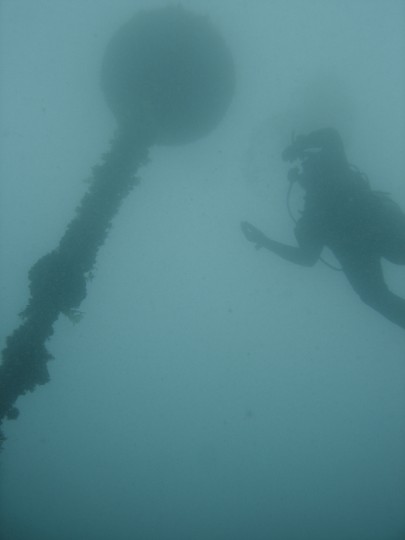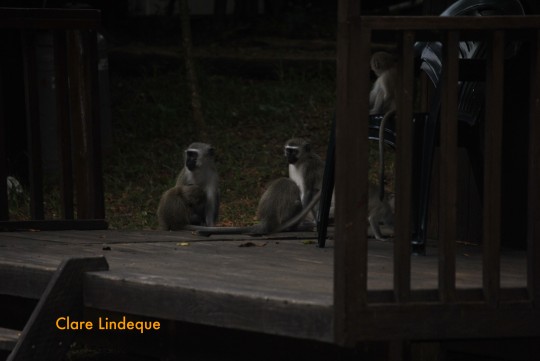The fourth in the Save Our Seas Shark Centre in Kalk Bay’s series of talks was presented by George Branch, who (in my eyes at least) has achieved near-legendary status as a marine biologist and author. He is one of the authors of Two Oceans, the invaluable reference guide to South African sea life, and also wrote the classic reference The Living Shores of Southern Africa in the 1980’s with his wife Margo. The topic of his talk was The Myths and Magic of Evolution, a subject that interests me enormously but until a couple of years ago it was not part of my education (formal or self-taught) at all. Unfortunately, at this stage in my life, I am so ignorant on the subject that I simply cannot judge where to start learning about it.
Enter the Save Our Seas Shark Centre! Prof Branch turned out to be a wise, patient (I asked several stupid questions) and fascinating teacher – clearly he is not only passionate about his areas of specialisation, but also about communicating the subject matter to others, at both beginner and expert level. Several times in his talk he indicated that he’d changed his mind and learned new things in the past two years – which impressed me enormously. I spent a good part of my young adulthood in the presence of frighteningly dogmatic individuals, to whom an idea such as the one espoused by John Maynard Keynes when he said, “When the facts change, I change my mind – what do you do, sir?” would be anathema. Fortunately Prof Branch is not dogmatic – he is gracious, curious, and thorough.
The subject of evolution is controversial in some circles, and Prof Branch started his talk by stating that no science is any use (in fact, I wouldn’t even call it science) if you can’t test the ideas. An untestable hypothesis is doomed to remain just that – a hypothesis, or a belief. Beliefs are only good for and useful to their holder. The talk was divided into five sections –
- The basics of evolution
- Tests of evolutionary theory
- New advances
- Controversy
- Guidelines
We found the basics of evolution, as set out by Charles Darwin helpful:
- more individuals are born than survive to reproduce (this is obvious – I am one of those individuals)
- variety exists among individuals of a species (also obvious – compare my freckles to Tony’s easily-tanned skin)
- fitter individuals are more likely to reproduce (“survival of the fittest” – a runty little shark who can’t swim fast isn’t going to find himself a sharky girlfriend – and the definition of “fitter” will vary among species)
- if characteristics are inherited, species slowly evolve, through either adaptation/microevolution (small changes), or speciation/macroevolution (splitting off into a new species)
The first two points listed above were obvious in Darwin’s time. According to Prof Branch, today we have evidence of all four processes.
It annoys and frustrates me that a discussion of science must mention religion, but unfortunately a lot of the objections to evolutionary studies have come from the religious right. One of the common difficulties is reconciling a seemingly random process (evolution) with the idea of a creator characterised by order. With this in mind, Prof Branch (who has spiritual convictions of his own and is apparently occasionally challenged about evolution at church by those less well versed in the sciences) pointed out that evolution is not a random process. The mutations that add variety to populations are random, but the selection process is not random.
The second part of the “basics” was an explanation of sexual selection, also observed by Darwin. To summarise it as far as one safely can, sexual selection occurs as one gender (I think usually the female of the species!) “likes” something in the other gender, that characteristic will be favoured (i.e. lead to more reproductive opportunities in those carrying it) EVEN if it’s a DARN NUISANCE. Just think about birds of paradise, or peacocks as an example.
There are as many as fourteen different tests or lines of evidence one can follow to test whether the predictions made by evolutionary theory are correct. Some of these are survival rates (clearly not every creature that has ever lived has survived to reproduce – if they had, the universe would be completely filled with bacteria, the population of which would be expanding outwards at the speed of light), and the evidence of the fossil record (increasing complexity diversity, and size in newer fossils, and also the existence of intermediate forms). Another line of evidence for evolution is the vestigial organs that occur in many creatures, such as the eye remnants in blind cave fish, the pelvis and femur remnants that exist in dolphins, and remnants in some microbes of the ability to photosynthesise. One can also observe “evolution in action”: speciation in plants, fast evolution of diseases such as flu and HIV, and many other examples.
I’m not going to go into the recent discoveries that Prof Branch covered, but suffice it to say there is enough material for several conferences. He also passed quickly over several new ideas that are being studied – we were running out of time!
In closing, Prof Branch discussed what many perceive as the conflicting forces of religion and science. Science provides us with facts, and through testing of ideas and experiments, it tells us what is true. Religion tells us how to employ those facts in our lives. The example of the different spheres of influence held by science and religion that he gave was of the atomic bomb – a stunning use of science, but a wholesale failure of ethics.
Two of the myths about evolution that Prof Branch dispelled at the end of his talk were particularly interesting to me. First, evolution cannot explain the origin of life. It can explain how life developed and increased in complexity, but not how it started. Second (I knew this already but it’s a stupid and oft-repeated objection to evolution by people who are too intellectually lazy to come up with anything more cogent) evolution is not “just a theory”. I encourage you to look up theory in the dictionary. When scientists talk about the “theory of relativity”, “theory of gravity”, “atomic theory” and “theory of evolution”, they are meaning it in the first sense.
In closing, I’ll list the guidelines Prof Branch gave us for handling the subject:
- Respect the views of others
- Recognise the different goals and limits of science and religion – they can be complementary
- Be frank about ignorance, both personal and scientific
- Insist on the testability of ideas and opposing ideas
I’ll leave you with a quote from Billy Graham that Prof Branch used towards the end of his talk:
I don’t think that there’s any conflict at all between science today and the Scriptures. I think that we have misinterpreted the Scriptures many times and we’ve tried to make the Scriptures say things they weren’t meant to say, I think that we have made a mistake by thinking the Bible is a scientific book. The Bible is not a book of science. The Bible is a book of Redemption, and of course I accept the Creation story. I believe that God did create the universe. I believe that God created man, and whether it came by an evolutionary process and at a certain point He took this person or being and made him a living soul or not, does not change the fact that God did create man. … whichever way God did it makes no difference as to what man is and man’s relationship to God.
Billy Graham: Personal Thoughts of a Public Man, 1997. p. 72-74
I am sorry that religious discourse has to intrude on a discussion of science. Many of those objecting to the theory of evolution on the basis of their personal beliefs are unfamiliar with the scientific method, the peer review process, and the language of science. Hopefully if, like me, your ability to comprehend this material was (or is) impaired by religious dogma and pseudo-science, you will be able to read the mainstream scientific literature that discusses the subject and gain more factual information in order to make an informed judgment on the topic.
For further reading, you can try Darwin’s Origin of Species (may be a bit dense – I haven’t read it), The Greatest Show on Earth by Richard Dawkins (be warned, he is an angry little man, but a good scientist), Guns, Germs and Steel by Jared Diamond (one of my most favourite books and authors), or The Structure of Evolutionary Theory by Stephen Jay Gould. Gould and Dawkins have both written a lot on the subject and may be a good place to start.
[Given my relative ignorance on this subject, if anything I’ve said here is inaccurate, you can be sure it was an error of transcription or comprehension on my part, and not an error of fact by Prof Branch!]













































